On Stoic Wisdom
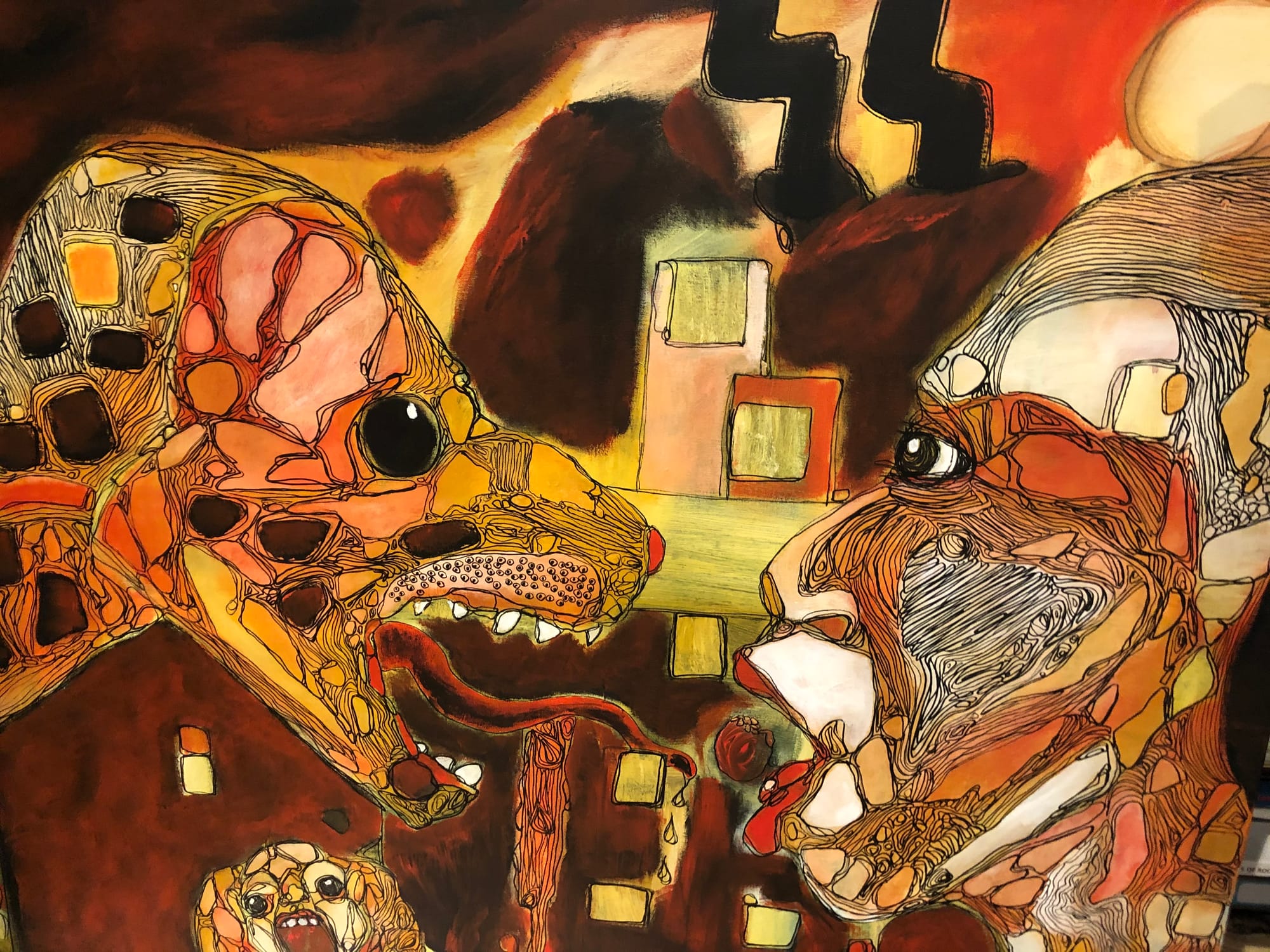
Interview by Richard Marshall

' It’s important to remember that Zeno, the Stoic founder, writes a Republic, that looks back at Plato’s Republic . Zeno’s sense of communalism and the importance of shared humanity based on common reason, as sketched in his own Republic (only bits of which are extant) are telegraphed in remarks like these in Marcus’s Meditations: We have to work together “like feet or hands or eyelids, like the rows of upper and lower teeth.” We are “woven together” by a “common bond,” “scarcely one thing foreign to another.”'
'A cognitivist theory of emotions doesn’t justify merciless control of them. Yes, the Stoics offer a cognitivist theory of emotions. That’s the descriptive account they offer. And here they tighten up Aristotle’s general view of emotions as having at their core beliefs, perceptions, or impressions. But unlike Aristotle, they also offer a prescriptivist theory of emotions that warns that emotions, even if cognitive, can outrun “rational” reason, or at least, distort a grasp of understanding that what really matters in the world is the cultivation of our reason-based virtue.'
''Herrion lives in Ferguson where Michael Brown was murdered by police in 2014. I did speak to him when the Black Lives Matter movement was surging. George Floyd had just been killed. “To not use Stoicism, especially in this time of transition, would be almost unjust,” Dobbie tells me. What he means by that is that Stoicism can help teach students both restraint and a sense of equity.'
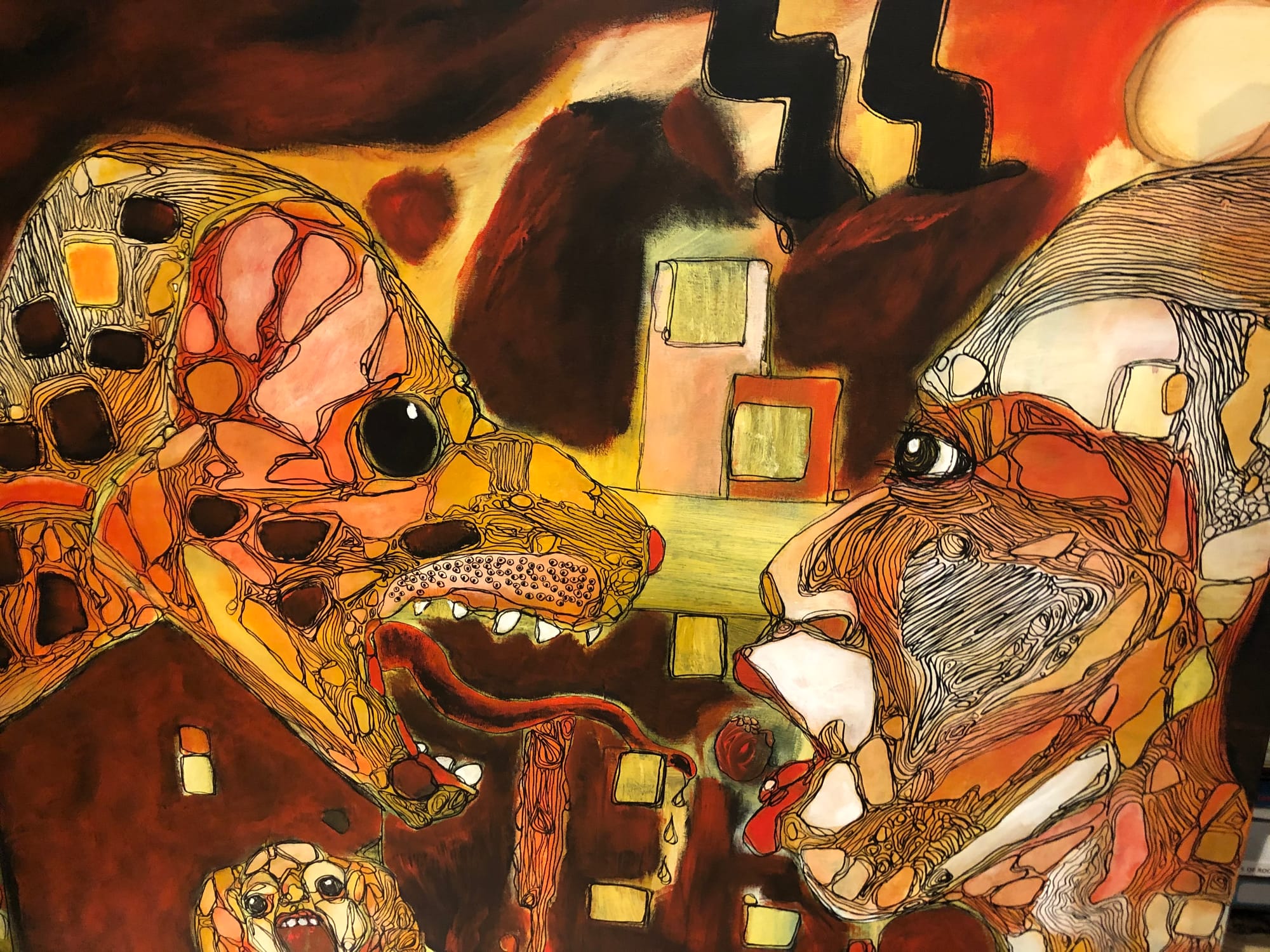
Nancy Sherman is a philosopher who has worked with the military for several decades in connection with Stoic ethics, posttraumatic stress, and moral injury. Here she discusses the Stoic revival, key figures in ancient Stoicism, control, cognitivism and managing emotions, Stoic empathy, military moral injury, life hacking, Seneca, Stoics and Buddhism, Dobbie Herrion, role models, toxic orthodoxy and Stoicism as secular religion.
3:16: What made you become a philosopher?
Nancy Sherman: I was an intellectually hungry undergrad when I started Bryn Mawr College, armed with the question that had preoccupied me in my high school years: What makes us human? I had been reading Freud, Margaret Mead, some religion on my own, and so when I got to Bryn Mawr, I decided to take up the question seriously. I began with a course in anthropology. But when the professor rolled in with bones and fossils, I knew this wasn’t what I was after. Physical anthropology, not cultural anthropology, was on offer. Next, I moved to psychology. But it was behavioral psychology, as B. F. Skinner was in fashion. I had my own lab rat, which I named “Absalom” (I was reading Faulkner at the time), and while I learned a lot about the rat’s pleasure center and the conditioning that came with getting little Absalom to push a lever and be rewarded with pellets of food, it wasn’t what I was looking for. I hit dead ends, also, with English literature, which was too much about style not enough about theoretical content, for my taste, and political science tended to be too statistical for my skill set. So, you might say, I arrived at philosophy by a process of elimination. And once there, I stayed there!
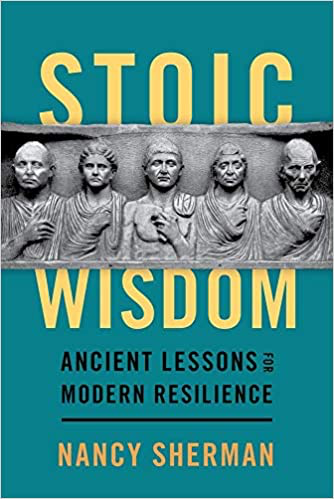
3:16: You’re an expert in the field of ancient Greek and Roman philosophy and you’ve recently been thinking about the Stoics. You talk about ‘the great Stoic revival’ and Stoicism has become the go-to ethics for a certain type of ‘life-hacker’ – the ‘new zen’, the ‘operating system’ for the modern entrepreneur, - and it seems to appeal to certain Alt Righters as well as Lefties and Silicon Valley big dreamers. How do you explain this new trend in ascetic ethics – is it all to do with beating pain and a symptom of a pandemic of feeling vulnerable hitting these folk as Covid, global warming and the collapse of American democracy looms?
NS: Ascetic ethics is a bit of a curbing in of appetite, especially among the techno-plutocrats, such as Jack Dorsey (former Twitter CEO) who likes to take ice baths lest he gets too used to comfort, or Tim Ferriss (angel investor) who thinks about “fear-setting” as a “life-hack” for curbing his anxiety about his business enterprises failing, etc. But in this regard, the Silicon Valley dreamers are in good company with some of the Roman Stoics. As an advisor to Nero, Seneca accumulated enormous wealth, and he was always trying to keep in check his own opulent tastes. His household retinue of enslaved persons makes Downton Abbey look understaffed. Some of the embrace of Stoicism by the alt-right is in keeping with an older appropriation of ancient Greco-Roman culture as the bulwark of white, male, and western ideology. I’m not sure worries about the pandemic, or global warming, or the collapse of American democracy loom large in the minds of the alt-right!
But I do think an accessible philosophy that has pithy quotes, such as you can find in Epictetus, Marcus Aurelius, or Seneca—and that gives concrete meditative techniques for finding calm in a time when anxiety is running high—whether to do with disease, global warming, or the breakdown of democracy—is incredibly appealing. The Stoics offer protocols for monitoring your attention, for starting your day on a good footing, for thinking about what can derail you. They give prophylactic exposure therapy, visualization exercises, if you will. That’s incredibly useful in a pandemic where so much seems out of your control.
3:16: So who are the key figures of the old Stoics and why do you think they’re a bridge between the ancient and modern worlds? Epictetus is one who has been used a lot in the recent hyperbole but you think he is too much of a hyperbolizer himself to be taken too seriously. Socrates and irony are for you more important starting points aren’t they, the way it paves the way for ugliness becoming beauty and a reevaluation of values to take place. Are these guys the revolutionary thinkers of the ‘slave revolt’ in Nietzsche, harbingers of the ascetic planet – your picking out of Philo of Alexandria, a rather obscure but important figure in your eyes, who read the Old Testament in the light of Stoic teachings, would seem to support this view of their influence on Christianity?
NS: Epictetus goes in for “shock and awe.” And some humor, much needed if you read a lot of Stoicism! He is a hyperbolizer, and one who knows his audience—boys between 18-22 who wander into his lectures; he knows he needs to entertain them if he is going to keep them as his students. My own students are often entertained reading some of Epictetus’s quips. That said, Epictetus’s views are rooted in orthodox Stoicism. But as a former enslaved person, he certainly emphasizes a retreat to the inner citadel as the true place where one can cultivate virtue. Interestingly, Marcus Aurelius, who read Epictetus, preserves the more social thread that runs through the ancient Greek Stoic account. It’s important to remember that Zeno, the Stoic founder, writes a Republic, that looks back at Plato’s Republic . Zeno’s sense of communalism and the importance of shared humanity based on common reason, as sketched in his own Republic (only bits of which are extant) are telegraphed in remarks like these in Marcus’s Meditations: We have to work together “like feet or hands or eyelids, like the rows of upper and lower teeth.” We are “woven together” by a “common bond,” “scarcely one thing foreign to another.” And again, most vividly: Picture a dismembered hand and head lying apart from the rest of the human trunk. That’s what “man makes of himself . . . when he cuts himself “from the “world” of which he is a part. Body parts can’t function cut off from the organic whole to which they belong. Marcus is writing notes “to himself” (the original titling of his Meditations) during the Germanic campaigns along the Danube (172 -180CE). The detritus of the battlefield must have been on his mind. But so, too, the idea that a cadre marches together and that its strength depends on coordination and mutual support. That image of belonging and connection becomes a metaphor for the community of humanity as a whole.
Philo of Alexandria is an interesting writer who gives us a sense of how Stoicism was picked up in the Judaic tradition. Sarah and Abraham become Stoic sages, or at least, quasi-sages, on the cusp of learning how to curb disruptive emotions--unbridled grief, in Abraham’s case when he loses Sarah, or overly nervous skepticism, in Sarah’s case, when she learns that as a centenarian, she’ll give birth. Again, there may be an ascetic tone here, but what I find fascinating is the rich exploration of different levels of emotions. If Jewish matriarch and patriarch are going to be sages, well then, yes, they have to rein in some unruly emotions and try to cultivate more equable ones. These are the Stoic “good emotions” that the sage models. But Philo, like Seneca, and presumably the ancient Greek Stoic texts they were both reading or knew about, develop a lower tier of emotions—fast track emotions that are proto-emotions, starts and startles, bodily arousals, emotions that we are on the verge of giving in to more fully—that do a lot of the important signaling work of emotions—first alerts about threat, loss, objects of desire or pleasure.
We can nip them in the bud, before they become full-blown emotions that may overrun reason. But even the sage, and here, Abraham and Sarah as near-sages, Philo tells us, can experience these proto-emotions without impunity. They are adaptive, fast responses to our environment. That’s not overly ascetic! It’s smart.
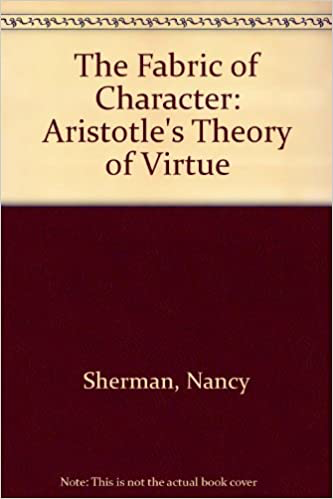
3:16: ‘Pre-rehearsal’ and ‘anticipation’, ‘dwell in advance’, ‘assent to impressions’ seem to be what Stoic practice is about. What are these? It all sounds very individualistic but one of the things you argue is that to see Stoicism as a self help manual for the lone individual – a kind of Clint Eastwood lone gunslinger ethic – is to misread the Stoics. What makes you say relationships with others, and support, is as important as self-reliance to Stoicism? And why doesn’t Epictetus’s assessment that we are all hostages to fortune and that there is a hard line between things in us we can control and things outside us that we can’t persuade you?
NS: I don’t read the dichotomy of control that Epictetus opens the Enchridion with as drawing a hard line between what is and isn’t in our control or as as an endorsement of a Stoic retreat to the self. I say that because those same techniques for assessing what’s inside and outside, in your control and outside your control, provide ways of changing what is within your control, and in turn, the outer world. Indeed, what is often missed when Stoicism is presented as self-help, is that the very tools that can put a buffer between the outer world and our spin on it are the same ones that can help us change that outer world for the better. We see through implicit biases we don’t know we have. The Stoics teach techniques for slowing down impulsive thinking that can distort judgment. They teach protocols for monitoring attention. Seneca puts it this way: We can often insert attention and will and monitor “impulsive impressions” and the quick emotional reactions that follow –nip them in the bud—before we yield to them in irrational or disabling ways. Even if we are wired by nature to respond to threat with lightening quick reactions, (with proto-emotions) we can learn to better assess the dangers, and assess our own estimates of them. Fear and anger too often “outleap reason.” We need to learn how and when to press the pause button. We need to mobilize attention, he says, to lessen the impact of near-automatic responses subject to distortion and error. In a remarkable way, Seneca presages Daniel Kahneman’s notion of “thinking fast” and “thinking slow,” with thinking slow, or monitored attention, a corrective for thought and emotion that can sometimes run amok. For moderns these can become techniques not of retreat, but for engagement in the social world where we try to check our own biases because we know they can be obstacles to cooperation and collaboration.
3:16: Managing your emotions is another big thing associated with the Stoics isn’t it? So what does this mean for a Stoic – it sometimes strikes me when I listen to Stoics talking that they’re throwing out a lot of the baby with the bathwater – I like to live with emotions and like people to emote if they want to. I might agree that emotions are cognitive – I don’t see how that justifies controlling them.
NS: A cognitivist theory of emotions doesn’t justify merciless control of them. Yes, the Stoics offer a cognitivist theory of emotions. That’s the descriptive account they offer. And here they tighten up Aristotle’s general view of emotions as having at their core beliefs, perceptions, or impressions. But unlike Aristotle, they also offer a prescriptivist theory of emotions that warns that emotions, even if cognitive, can outrun “rational” reason, or at least, distort a grasp of understanding that what really matters in the world is the cultivation of our reason-based virtue. All that can look austere. But if you look more carefully, the Stoics are simply saying that many of our ordinary emotions –desire, fear, pleasure and distress in all their variety—tend to be sticky attachment emotions or panicky aversive emotions--recalcitrant emotions we just can’t easily let go of. The Stoics are early cognitive behavior theorists. They want to help us to learn approach and avoidance attitudes and behaviors where we aren’t as acquisitive as we tend to be, or as compulsive or stuck. Their meditative techniques—prehearsing bads, or learning to press a pause button, or cushioning our plans and desires with what they call “mental reservation” (an “if clause), so that “if things don’t work out,” we have a back-up plan and can be nimble and adaptive—all that makes eminent sense to me and is not a matter of squelching emotions and the beauty of them in our lives.
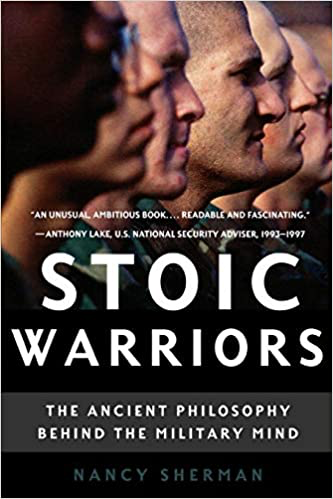
3:16: Grit and resilience seem very much the Clint Eastwood gunslinger ethic. Suck it up, keep on going, bounce back, be unbeatable. Isn’t this stuff closely linked to an idea of making yourself invincible, and isn’t that just impossible outside of myths and legends. You argue that to read Stoicism in this way is wrong – you make much of Stoic empathy and Hierocles’s work on how to take on the interests of others, don’t you? Can you say something about this?
NS: It seems improbable that the Stoics could argue for the place of empathy in their account of Stoic ethics. But they do. Hierocles, a lesser-known second-century Roman Stoic philosopher, offers this concrete exercise for expanding circles of concern: Draw concentric rings around the self as center point. Make the inner circles kith and kin, then beyond that, fellow tribesmen, then local and country citizens, until finally, one reaches, the outermost circle, the whole of humanity. Your job, Hierocles writes, is to shrink the space between the circles, “zealously transferring” those from the outside to the inside. It’s a de-othering exercise of sorts. That kind of concrete mental exercise resonates with a Scottish Enlightenment theorist much influenced by the Stoics. And that is Adam Smith. He hones the method, arguing that we should use cognitive empathy and imaginative transport as ways to expand the circles of concern. We bring distant others into our orbit by imagining what it is like to walk in their shoes—“we enter as it were into his body and become in some measure the same person with him.” We trade “places in fancy,” learning how to “beat time” with another, says Smith. He is building on Hierocles’s idea of bringing the other into our immediate orbit and adds to it the idea of taking up the perspective of that other. Hierocles and Smith are talking about shrinking the world. But the exercise of taking up another’s perspective can be profoundly therapeutic.
Seneca illustrates this in a most powerful way in his play Hercules Rages. The setting is this: Hercules is poised to burst into this world from Hades, having finished the last of his twelve labors. He is eager to see his father, Amphitryon and wife Megara and children, all suffering under the tyrant Lycus who killed Creon, Megara’s father, and captured his kingdom during Hercules’s absence. But Juno, his jealous stepmother, rages at the anticipated reunion. She will unleash one last labor, and this the worst of all. She “turns his courage against himself,” and in a blind stupor, Hercules slaughters his whole family. When he comes to, and sees what he has done by his own hand, his suicidal rage knows no bounds. But his father and closest friend intervene with empathy and compassion, in a bid to get Hercules to understand what happened and how to go forward. His father is gentle and soulful. He begs his son: “The grief is yours. The guilt your stepmother’s. Bad luck is not your fault.” Hercules’s friend is more direct: “Use your heroic courage” to not stay angry at yourself. In essence, these are techniques for finding self-empathy by another showing you empathy. The benevolence and good will of others, their forgiveness and at times mercy, is required to nurture the self-empathy so critical for posttraumatic growth and resilience. It is a technique currently used in veteran treatment of moral injury: You take the perspective of a benevolent other and try to see yourself through that lens. The idea is presaged in this Stoic text. Seneca is arguing that this kind of self-empathy can be the most heroic, Herculean kind of courage. Yes, the Stoic lesson is rooted in myth. But the myth, in Seneca’s hands, is not about invincibility, but about vulnerability. And the role supportive others play in sustaining our resilience. It is about Stoic social grit.
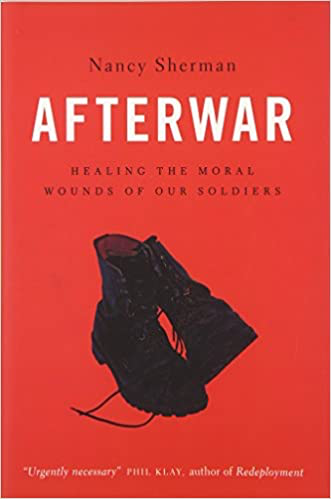
3:16: Admiral James Stockdale is a key figure in your book – his example takes you to think about Stoicism in relation to the culture of the military. So what do we learn from Stockdale’s experiences about important notions like ‘military moral injury’, the tears of Alcibiades and the plea for self mercy?
NS: The “tears of Alcibiades” becomes a challenge for Stoic thought: how to understand moral distress or moral injury (the feelings of guilt, shame, anger that often come with having perpetrated, suffered, or witnessed, up close, moral transgression) and that yet, can open the way for moral repair and growth. Cicero poses the challenge. Not himself a Stoic but a key redactor of the texts, often attracted to Stoic ways, he insists in the Tusculan Disputations that Cleanthes, the second of the three Greek patriarchs of the Stoic school, doesn’t take the problem seriously enough: “It seems to me that Cleanthes does not take sufficiently into account the possibility that a person might be distressed over the very thing which Cleanthes himself counts as the worst of evils.” And then Cicero reminds his readers of the famous scene at the end of the Symposium: “For we are told that Socrates once persuaded Alcibiades he was unworthy to be called human, and was no better than a manual laborer despite his noble birth. Alcibiades then became very upset, begging Socrates with tears to take away his shameful character and give him a virtuous one.” Cicero presses the Stoics to make sense of Alcibiades’s tears: “What are we to say about this, Cleanthes? Surely you would not claim that the circumstances which occasioned Alcibiades’ distress was not really a bad thing?” Isn’t it an“impulse toward virtue itself?” he asks.
That said, Cicero acknowledges that the impulse toward virtue can be overly vigorous. I know this from my work with soldiers, including conversations with ADM Jim Stockdale, who felt the shame of not being strong enough in his 7 ½ years as a POW in the “Hanoi Hilton,” and the fear and shame of letting down those he led in his chain of command, should he break under torture. Soldiers take on responsibility that can be overweening, and the guilt and shame can be crushing. And we, as a society, implicitly encourage it, in all sorts of insidious ways: by “outsourcing” military duty these days (in the post-Vietnam era of non-conscription) to less than 1 per cent of the population drawn from a vulnerable socio-economic demographic; by underreporting and distorting the full extent of horrific collateral incidents that wreak psychic havoc on the individual service members who may have incurred the killings under permissive rules of engagement; by retreating in haste from warzones and leaving behind too many vulnerable civilians, interpreters, drivers and fixers and local journalists whose close partnership and friendship soldiers depended upon for their missions. We have yet to see the depth and extent of the moral injuries those who fought in Afghanistan will suffer. But we already know that the quick Taliban takeover and chaotic withdrawal by U. S. forces weigh heavily on the minds of veterans who fought in Afghanistan. This is all part of the complex phenomenon of military moral injury.
So, can the Stoics find room for this kind of moral anguish and for the healing that might follow? I think they can, at least indirectly. Seneca begins to answer Cicero’s challenge in his play, Trojan Women. I won’t give the full details here. For that you have to read Stoic Wisdom! But the gist is that war leaves in its wake both an inner war and ongoing post-bellum outer war on the ground. There needs to be room for empathy and mercy if there is to be some measure of peace and healing after war. Andromache, Hector’s wife, makes that plea to Ulysses, the Greek victor. She pleads her case at the very moment that he is intent on killing her child, an innocent pawn in a war of vengeance. Ulysses fears the little boy can ignite another cycle of the Trojan war. But the boy is no threat, says the mother. He may be a royal, but he is as good as a slave now. Just put a “yoke on his royal neck.” To kill him is a crime of war, an atrocity that will be pinned not on the gods, but on you, Ulysses. She begs for his mercy. She begs him to stay his own vengeful anger. In the end he doesn’t. What we learn in this play is that mercy is more elusive than anger. It requires firm discipline. But first you have to vanquish anger so there is room for mercy.
Ulysses’s anger is toward the Trojans. The anger of many warriors I work with is toward themselves, in the form of guilt. Guilt is self-anger. And self-mercy may be its therapy. If we merge the lessons of Hercules Rages with those of the Trojan Women, Seneca is pleading for space in a Stoic account for both mercy toward others and mercy toward self to heal the moral wounds of war. The plays are a cautionary tale. This is what happens if we fail to leave room for compassion. Stoic calm requires both staying the hand of anger and cultivating benevolent outreach.
3:16: You explain that the term ‘life hack’ was first coined at the 2004 O’Reilly Emerging Technology Conference in San Diego by journalist Danny O’Brian. The term described productive shortcuts to IT innovation and work generally. It’s been expanded since to mean a shortcut for handling life’s challenges. In wondering whether Stoicism a life-hack you come back to thinking about the limits of seeing it purely in terms of a self quest and, as you do throughout the book, have some poignant stories to illustrate the problems with seeing life as a life hack. So why isn’t it a life hack? The Geoffrey Woo example you use – a professed Stoic who wants to live forever, also points to the importance of what you desire as well as to the issue of your attitude to desire – it’s important to note that Stoicism has consequences on which desires are permissible doesn’t it?
NS: Some life hacks, as in a biohack to live forever, runs fully against the Stoic grain. The Stoics may be control freaks, but they urge us to accept our mortality, and indeed, to pre-rehearse it. Redefining what’s in our power and what’s possible, including human immortality, oversteps the reach of Stoic self-mastery. Stoic athletic discipline of mind and body includes wise selection of the externals that affect our life chances. We are taught to select in ways that accord with nature, however inscrutable nature’s laws. But one thing that bounds our human nature, even if we share reason with the gods, is that we, unlike them, are finite mortals. Any idea that wise and prudent living can eliminate death is decidedly unStoic. The Stoics never viewed the body as itself a material to be made resilient against all affronts. That’s a modern notion of control it would be near impossible for a Stoic to think was Stoic.
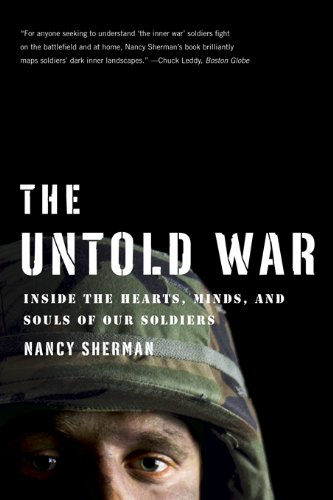
3:16: Seneca, for one, meditated and saw this practice as an essential part of his Stoicism. So is this more than just being honest about yourself? And isn’t there evidence that to have to face the truth about ourselves too often is bad for our mental health – we over estimate our worth because, frankly, we’re all pretty mediocre or less in most things most of the time. It’s depressing not uplifting ? It’s why children constantly tested and put at the bottom of the class again and again lose hope and act out, and adults finally ‘go postal’ isn’t it? Aren’t the Stoics just wrong headed about this?
NS: Stoics can be harsh self-critics. They go in for a tough super-ego and think the lessons revealed about foibles and failures can, with the right discipline, lead to personal reform. Stoic self-scrutiny, in the morning or night, isn’t always in the presence of a benevolent therapist. But Seneca often tries to be one in his endearing letters to Lucilius. The partnership of moral development is the theme in that work, even if the epistolary relationship is only literary. (Letters may never have been sent or received.) Seneca may be playing the role of therapist and patient, as he often says he is.
I wouldn’t advise relentless self-critique, but being open to criticism is essential to growth and a restraint on narcissism. I think Aristotle has it right when he thinks of the best kind of character friends as holding up a mirror to each other so that we can learn about ourselves in the context of safe and loving relationships. It’s a pity that the Stoics, who may or may not have read Aristotle, but certainly knew about key themes in Aristotelian ethics, didn’t preserve that part of the account. They were too keen on separating themselves from some of Aristotle’s views, especially his insistence that happiness includes as components both virtue and some measure of external goods, including relational goods.
3:16: How do you see Stoicism in relation to Buddhism? Are they speaking to the same issues, or is that an illusion and in reality they are speaking past each other?
NS: I am not a scholar of Buddhism, and don’t know exactly what, if any, the historical patterns of cross-fertilization between Stoicism and Buddhism were. But that said, Buddhist meditation is about quieting the self, and stopping the verbal babble that preoccupies us much of the day. Stoic meditation is chatty and discursive, and the tone is moral. It is a form of moral suasion. Still, both focus on freedom from cravings and anxious attachments, spiritual journeys and mentors who proffer inspirational wisdom. Both view benevolence as an important part of enlightenment. Both view enlightenment as waking up from the stupor of false values. Both teach that we are limited by what we choose as our models and what we focus on as possible.
But the foundations of the two philosophical schools couldn’t be more different. The Stoics don’t posit as fundamental, in the way Buddhists do, the notion that all things in this world are ephemeral or that that wisdom requires a robust detachment from self, a “personal selflessness” or “emptiness” that liberates you from the busy-ness of words and discourse and quiets a mind for insight into a deeper reality. The Stoics invest heavily in the self and its reason. Therapy of the emotions just is the engagement of reason—“rowing the oars of dialectic,” as Cicero puts it.
3:16: Dobbie Herrion sees Stoicism as ‘To relearn how to properly live.’ He links to Seneca’s ‘On Anger’ and the notion of effortful monitoring. Can you tell us about the context out of which his thinking is formed and what he’s trying to do? You spoke to him at a time when the Black Lives Matters movement was growing, and he lives in Ferguson where Michael Brown was murdered by police in 2014 so is someone living in a violent, stressful, anxiety-ridden place and time.
NS: Dobbie Herrion, like his colleague at the time, Bob Cymber, are educators. They see applications for Stoicism in school, in K-12 classrooms, in neighborhoods, as you say, in and around St. Louis, Missouri, where there is a lot of racial tension. Herrion lives in Ferguson where Michael Brown was murdered by police in 2014. I did speak to him when the Black Lives Matter movement was surging. George Floyd had just been killed. “To not use Stoicism, especially in this time of transition, would be almost unjust,” Dobbie tells me. What he means by that is that Stoicism can help teach students both restraint and a sense of equity. With children, roughly 8-10 years-old, they simulate a scenario to do with sharing candy. A student has taken more than her fair share. “Well, how do you react to it?” asks Dobbie. “One student gets mad.” Another one says “I’m gonna… yadda yadda yadda.” Maybe another starts picking on a student who was at the front of the line. “They’re real life situations. Real reactions. We create a moment of pause to let the students see how they are reacting to the situations,” Dobbie says. “So, when they leave the school setting, and they go home and their neighbor steals their bike or their mom doesn’t get them the shoes they want, they have practiced a different type of behavioral response.” They’ll feel the “onset of anger,” explains Dobbie. But “what we don’t want to do is let the anger take them down a path that 1) they’ve been used to going down and that 2) is uncontrollable once they’ve gone astray.”
Seneca’s teaching in On Anger is background here: “The first mental agitation induced by the impression of wrong done is no more anger than is the impression itself. The impulse that follows, which not only registers but confirms the impression, is what counts as anger.” Seneca has a view of ordinary emotions, like anger, as chosen actions: Anger is “a movement generated by decision” that “can be eliminated by decision.” What these Stoic-inspired teachers are trying to teach is control at that pivotal first moment of decision—the “assent to an evaluative impression.” It’s that assent to an impression of having been cheated or “gypped,” in the case of these young kids, that gets the impulse of anger going. One might challenge the view of these teachers: Isn’t curbing anger an obstacle, in the long run, to justice. Isn’t there a kind of rage against systemic racism that should not be quelled? These teachers aren’t taking up that question. They are not thinking of all the different kinds of anger—narcissistic rage against injuries to one’s honor or status, rage against racism or prejudice, rage against losing privilege or power, etc. But to be fair, Stoics, like Seneca, were themselves thinking only of one kind of rage, and that was the rage of abusive power, that is, the rage not of the marginalized, but of the privileged, unleashed on those without power. It is a kind of narcissistic rage against threats to images of status and the status quo . When kids aren’t getting what they want and think they should have, more pie and more candy, that is a kind of narcissistic affront!
3:16: Are role models important for Stoicism – and is Socrates probably the best model for a Stoic?
NS: Model the behavior of exemplars. “If you need a model, take Socrates.” “Would you like a second model? Take the younger Cato,” Seneca writes to Lucilius. “Learn what to do from someone who is already doing it.” The tradition of moralizing through examples is central to Roman moral experience. Seneca relies on it regularly in his letters, consolations, and plays. He turns to history for raw material, but also to daily life to set an example and a model for moral guidance. Examples becomes patterns for imitation and emulation. They are more direct than precepts or dialectical arguments. They cut to the chase: “Formal discourse will not do as much for you,” he writes to Lucilius, “but direct contact, speaking in person, sharing a meal. You must come and see me . . . learning by precepts is the long way around. . . The quick and effective way is to learn by example.”
Socrates is a useful model for the Stoics. He was an ascetic-- he could endure the cold, he was the epitome of self-mastery and self-restraint, and he engaged in honest self-scrutiny about how to live a good life. But he wasn’t a perfect model, for while he acknowledged that he didn’t have flat out ignorance, he also didn’t think that the kind of knowledge he or others had could guarantee that a rational and happy life was attainable. The Stoics don’t buy Socrates’ resignation. Nature must have so constructed us to be able to attain the knowledge necessary for happiness, even if it is only a rare sage, one who rises only as often as the phoenix, who can achieve that kind of infallible knowledge. So even if Socrates is the model for many Stoics of a Stoic sage, it is not in his embrace of ignorance as wisdom.
3:16: We’re living through some very odd things – cancel culture in universities is one of them. It seems to be driven by a very puritanical and righteous attitude that moralises everything to the point where the idea of heresy as an intolerable deviation from orthodoxy seems to be at work once more, although no longer in the name of a religion but a lefty politics. On the one hand your ancient Stoics might well be condemned by this new orthodoxy as being politically suspect because they’d condone slavery and saw inner freedom as freedom, but couldn’t a sort of Stoicism, understood as standing firm against the deviants outside, be also fuelling this toxic Puritanism?
NS: Orthodoxy of any form, I think, is toxic. And it cuts against a theme the Stoics themselves embrace of the power of reason to connect us in some kind of shared enterprise, where we come out of silos and try to break down barriers. Just as orthodoxy is toxic, so too, is the turning of different points of view into cultish positions, exacerbated, no doubt, by social media and fandom. I do think current rifts in America, as in the mask wars, point to a kind of religious fracturing, almost like that we’ve seen between Catholics and Protestants in Northern Ireland or Israelis and Palestinians in Israel. What fuels some of the social wars in America right now are actually emotions like resentment, fear, and grief—a sense of being threatened, marginalized, or losing status. And that vulnerability is exploited by political leaders who have become demagogues. In a crucial way, the Stoic account of emotions helps to explain the underlying social psychology.
3:16: Does Stoicism have anything that Buddhism, Christianity and Islam doesn’t have to prevent it from becoming, like some versions of them have become, extremist, violent and elitist? My thought here goes something like this: They all have ascetic outlooks even though there are differences in theological detail, and they end up preaching much the same thing. Stoicism looks like religion for people who want religion’s boons but can’t stomach Gods. Ascetic religions tend to develop within them fanaticism, life denial, cultish exclusivity, spiritual elitism, violence, orthodoxy and this tendency towards radical extremism seems like a universal tendency of any ascetic movement. Reading your account of modern Stoics, we already seem to have these tendencies happening. How do you respond to this sort of observation?
NS: Yes, Stoicism is a secular religion for some who want spiritual guidance without God, clerics, or a building fund. The internet gives it to you more or less free, or you can pay a minimal subscription fee for daily meditations and apps. You get a community, the inspiration of daily pithy quotes, and some life coaching. For many Christians I’ve talked to who practice Stoicism, Stoicism seems very familiar, and not surprisingly, given Stoicism had a major influence on Christian thought. While there are some toxic alt-right and misogynistic online groups that appropriate Stoicism, I think they are in the vast minority. I don’t worry too much about Stoic radical extremism. I worry terribly about other kinds of corrosive forces that are undermining our democracy right now. Stoicism is not high on my list. I actually think understanding Stoic thought can be extremely helpful to many—both as a way to understand emotions, their positive power and peril—and as a way to conceive of the promise of cooperation through reason and discourse.
3:16: And for the readers here at 3:16, are there five books you could recommend, other than your own of course, that will take us further into your philosophical world?
NS: 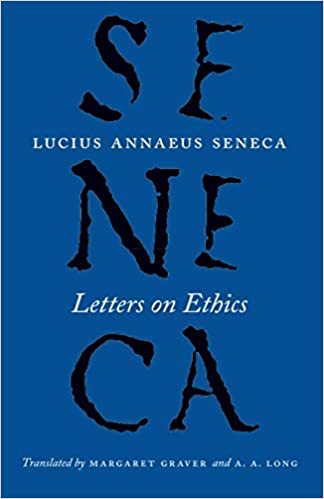
A favorite text of mine is Seneca’s Letters on Ethics, with a new wonderful translation and notes by Margaret Graver and A.A. Long.
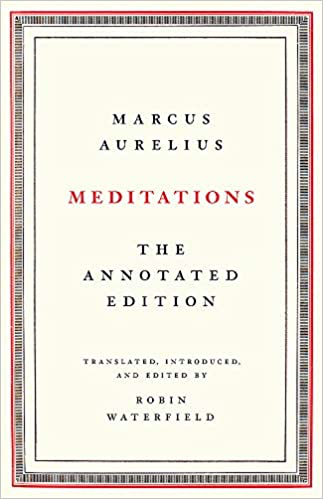
I also like Robin Waterfield’s recent translation of Marcus Aurelius’s Meditations . His introduction and notes are terrific.
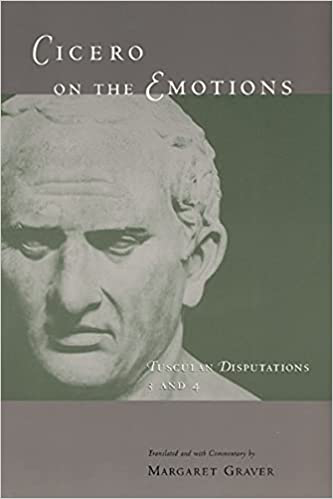
Margaret Graver’s work on Stoicism is incomparable. I highly recommend her translation of Cicero’s books 3 and 4 of Tusculan Disputations , with notes. It’s titled: Cicero on the Emotions.This is a text not often read, but it is critical for appreciating just how nuanced the Stoic account of emotions is.
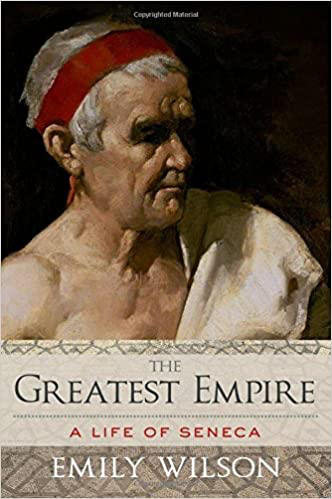
For some historical background on Seneca, I recommend Emily Wilson’s The Greatest Empire: A Life of Seneca.
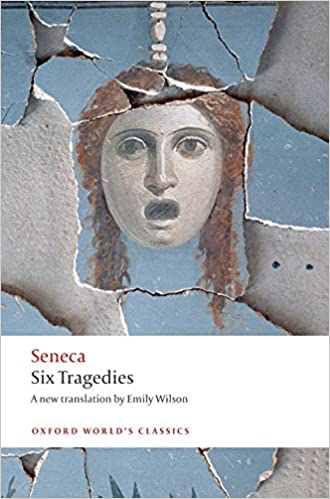
And then, of course, do read Seneca’s plays. Emily Wilson has a very good translation: Seneca: Six Tragedies.

ABOUT THE INTERVIEWER
Richard Marshall is biding his time.
Buy his second book here or his first book here to keep him biding!
End Time series: the themes
Huw Price's Flickering Shadows series.
Steven DeLay's Finding meaning series
Josef Mitterer's Josef Mitterer'sJosef Mitterer's The Beyond of Philosophy serialised
NEW: Art from 3:16am Exhibition starting 28th January in London - details here